Precision Nutrition Strategies refers to the practice of providing poultry with the optimal amount and balance of nutrients they need for their specific production goals, such as growth, egg production, or meat quality. This blog explores the intricacies of diets to meet the unique needs of birds, leveraging advanced technologies. Discover how precision nutrition is reshaping the landscape, enhancing efficiency, sustainability, and the overall well-being of poultry in the modern farming.
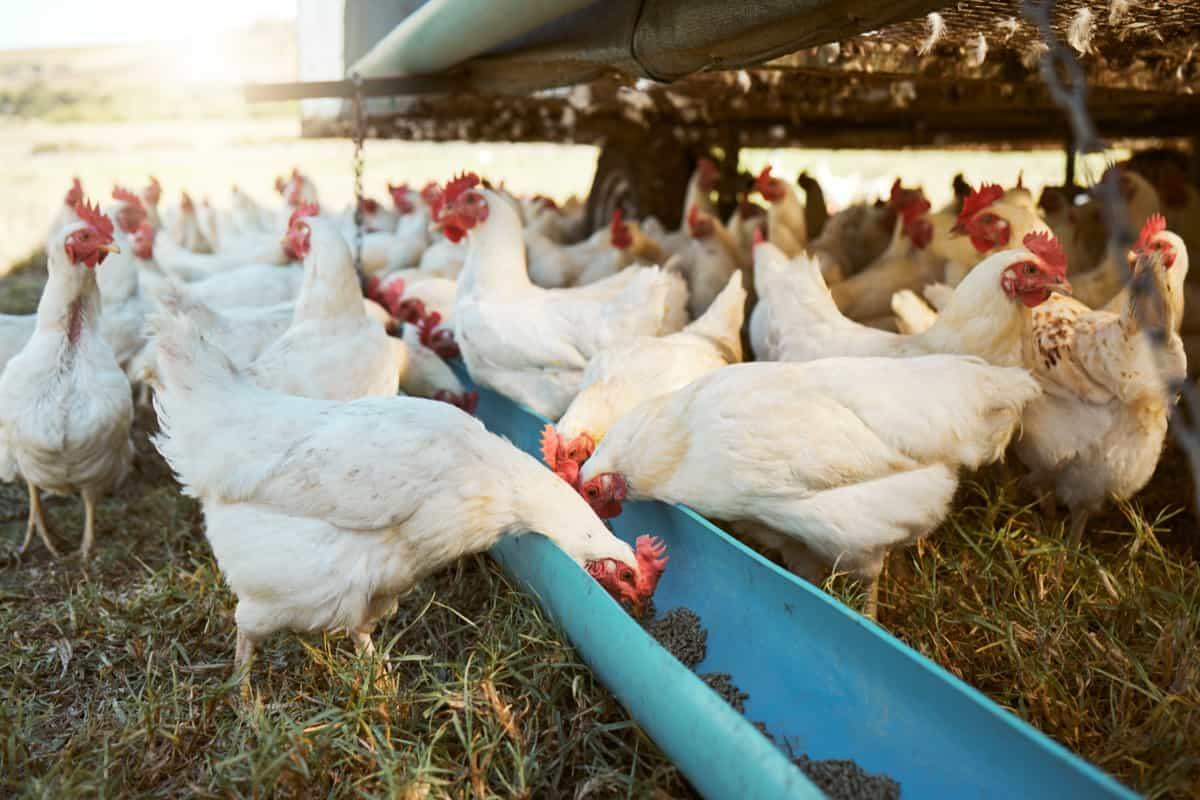
Precision Nutrition Strategies for Poultry Farming
What is Precision Nutrition Management?
Precision Nutrition Management in broiler chicken farming represents a paradigm shift. Traditionally, broilers are fed through three to five diet phases, leading to nutrient imbalances. While increasing phases boosts efficiency, it’s costly. Recent technologies enable blending feeds to meet daily nutrient needs.
This review assesses studies on varied feed phases’ impact, exploring extreme precision nutrition—daily diets matching broilers’ requirements. Precision-feeding technology promises enhanced efficiency, cost reduction, and sustainability. Beyond nutrition, it offers adaptability to environmental changes, market shifts, and farm-specific adjustments.
Nutrient Requirements for Poultry
Poultry require at least 38 nutrients in their diets in appropriate concentrations and balance. These include water, energy, protein, amino acids, vitamins, minerals, and other nutrients and additives. The nutrient requirements of poultry vary depending on many factors, such as species, age, sex, breed, production level, environmental conditions, and health status.
The most recent values of nutrient requirements for poultry were published by the National Research Council (NRC) in 1994. However, these values are based on experimental data and do not include a margin of safety or account for variations in nutrient bioavailability or quality. Therefore, adjustments should be made based on practical experience and current knowledge.
Precision Nutrition and Feeding Advancements in Poultry Farming
Precision Nutrition Requirements
Successful implementation of precision nutrition in poultry farming hinges on three crucial elements. First, accurate characterization of ingredients is essential to ensure that the final feed aligns with formulated diets. However, the variability in nutrient specifications due to management, breed, and environmental conditions poses challenges.
In case you missed it: How to Manage Chicken Feed Costs: Economic Strategies for Nutritious Poultry Diets
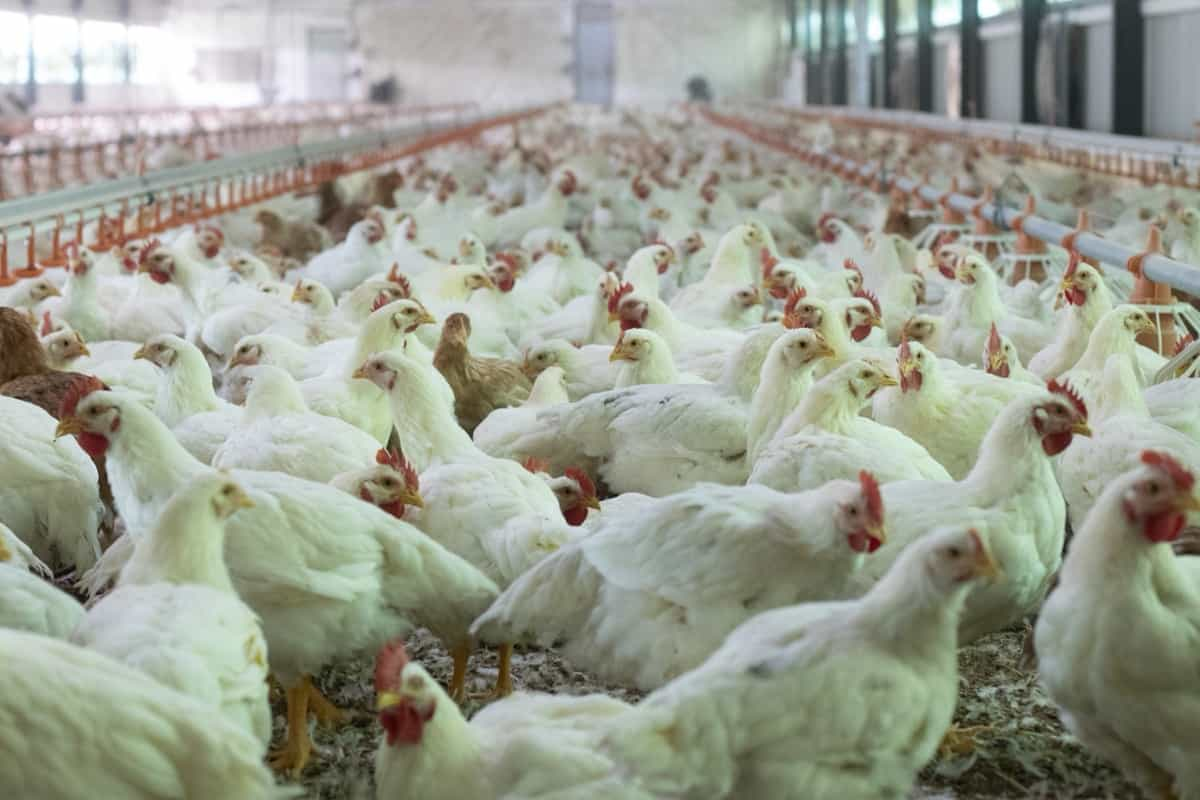
Near-infrared calibrations and databases like the Australian Feed Ingredient Database help address this variability, offering a more nuanced understanding beyond mean values and aiding in precise feed formulation.
Accurate Determination of Nutrient Requirements
Precise identification of broilers’ daily nutrient requirements is imperative. Studies dedicated to pinpointing nutrient requirements contribute to sophisticated modeling tools like the EFG broiler model. The accuracy of daily requirement identification improves with more data points, enabling a successful precision feeding regime.
Careful Management for Precision Nutrition
The third element involves meticulous management to align with ingredient characterization and accurate nutrient requirement determination. This ensures flexibility in dietary changes throughout the production cycle, facilitating interventions as needed.
Evolution of Precision Nutrition
The concept of precision nutrition isn’t novel but has evolved. The industry has demonstrated improved production efficiency initially explored by increasing diet phases. However, administering numerous diet phases is costly and impractical. Modern technologies now enable precision feeding, taking the concept to extremes, with potential efficiency, cost-effectiveness, and overall sustainability benefits.
Implementation of Precision Feeding Technology
Precision feeding technology plays a pivotal role in realizing precision nutrition. Existing systems, like the AIRFEED or Electronic Feed Weigher, offer precise feed monitoring and blending capabilities. In the poultry industry, precision feeding technology has shown promise in reducing nutrient wastage, improving efficiency, and enabling real-time adjustment of diets to reflect intake and growth.
Advancements and Practical Implications
Recent studies using precision feeding systems in broiler breeders showcase improved feed efficiency, uniformity, and potential welfare benefits. While initial costs are a consideration, the decreasing cost of technology makes precision feeding systems more feasible for mainstream chicken meat production. The industry’s adoption of precision nutrition and feeding technologies promises enhanced performance, improved management, and increased sustainability in poultry farming.
In case you missed it: Biosecurity Measures in Poultry: Effective Strategies for Disease Prevention
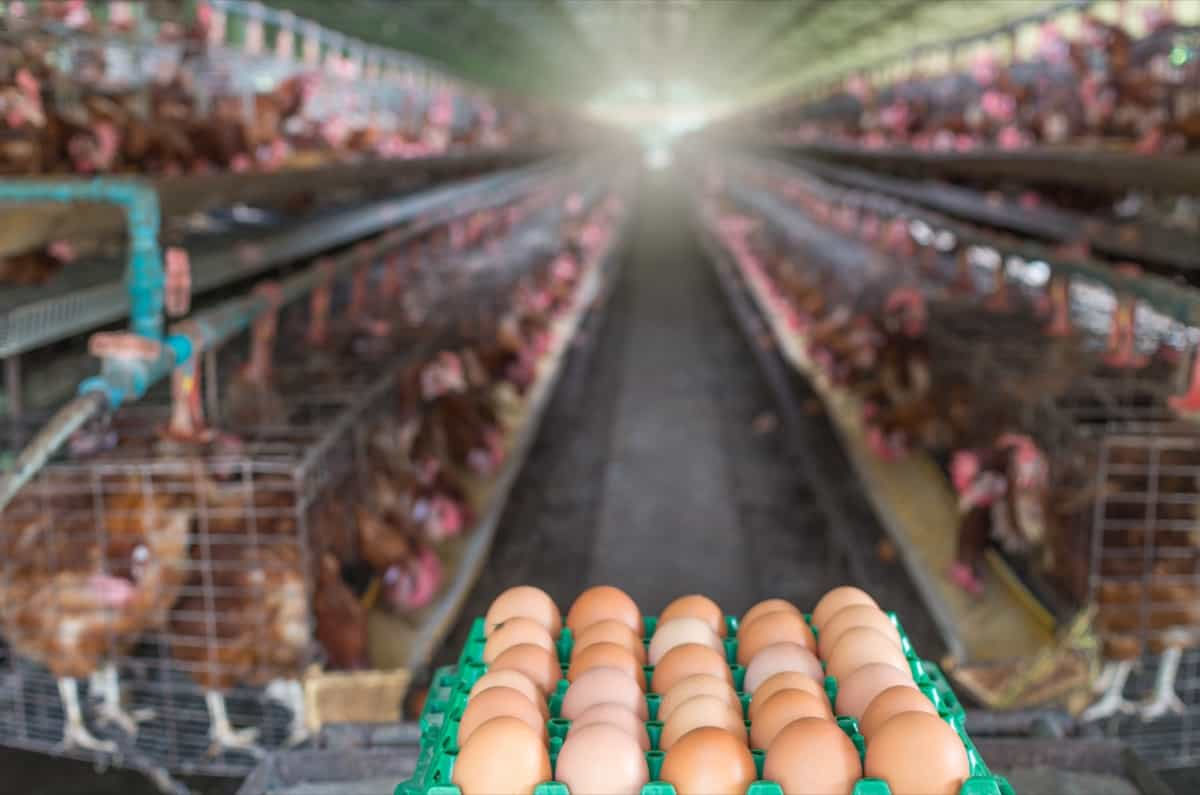
Balancing Protein and Amino Acids in Poultry Diets
Precision nutrition strategies aim to improve feed efficiency, reduce feed costs, enhance animal health and welfare, and minimize environmental impact. Precision nutrition strategies involve adjusting nutrient levels based on bird age, sex, breed, and environment, using feed additives or supplements for improved nutrient utilization, using alternative feed ingredients to reduce reliance on human-edible grains and legumes, and using feed restriction or phase-feeding to control body weight and fat deposition.
Protein is one of the most important and expensive nutrients in poultry diets. It provides the major building blocks for muscle growth, feather development, egg production, and immune function. Protein quality is determined by the amount and balance of essential amino acids (EAA) that cannot be synthesized by the bird and must be supplied by the diet. The most limiting EAA for poultry are lysine, methionine, threonine, tryptophan, and valine.
Balancing protein and amino acids in poultry diets means providing adequate levels of EAA to meet the bird’s needs without excess or deficiency. Excess protein or amino acids can increase feed costs, reduce feed intake, impair nutrient utilization, and increase nitrogen excretion. A deficiency of protein and amino acids can reduce growth rate, feed efficiency, egg production, egg quality, carcass quality, feathering, and disease resistance.
Optimizing Energy Sources for Poultry Nutrition
Energy is the most important nutrient in poultry diets because it determines feed intake and influences the utilization of other nutrients. Energy sources for poultry include carbohydrates (starches and sugars), fats (oils and animal fats), and proteins (amino acids). Carbohydrates are the main energy source for poultry because they are abundant, cheap, and easily digested. Fats are more considered concentrated sources of energy than carbohydrates and can improve feed efficiency, palatability, and energy density of diets.
However, fats can also increase the risk of rancidity, lower vitamin stability, reduce pellet quality, and affect the fatty acid composition of eggs and meat. Proteins can also provide energy for poultry, but they are more expensive than carbohydrates and fats and less efficient than fats. Therefore, proteins should be used primarily to meet amino acid requirements rather than energy needs.
Essential Vitamins and Minerals for Poultry Health
Vitamins, minerals are essential for the health and well-being of poultry. There are 13 vitamins, 15 minerals that are necessary for normal metabolism, growth, reproduction, and overall health. These include vitamins A, D3, E, K3, B1, B2, B6, B12, niacin, pantothenic acid, folic acid, biotin, and choline, as well as minerals such as calcium, phosphorus, magnesium, sodium, potassium, chloride, iron, zinc, copper, manganese.
Incorporating Fiber and Roughage in Poultry Diets
Fiber and roughage, a type of plant material, can have positive and negative effects on poultry nutrition. Fiber, mainly cellulose, hemicellulose, lignin, and pectin, can increase feed bulk, stimulate gut motility, enhance gut health, modulate blood glucose and cholesterol levels, and reduce disease risk. However, they can also reduce feed intake, lower energy and nutrient density, increase feed costs and waste production, and impair product quality. Therefore, they should be used with caution and moderation in poultry diets, and their effects should be closely monitored.
In case you missed it: Innovations in Poultry Farming: Technology and Automation
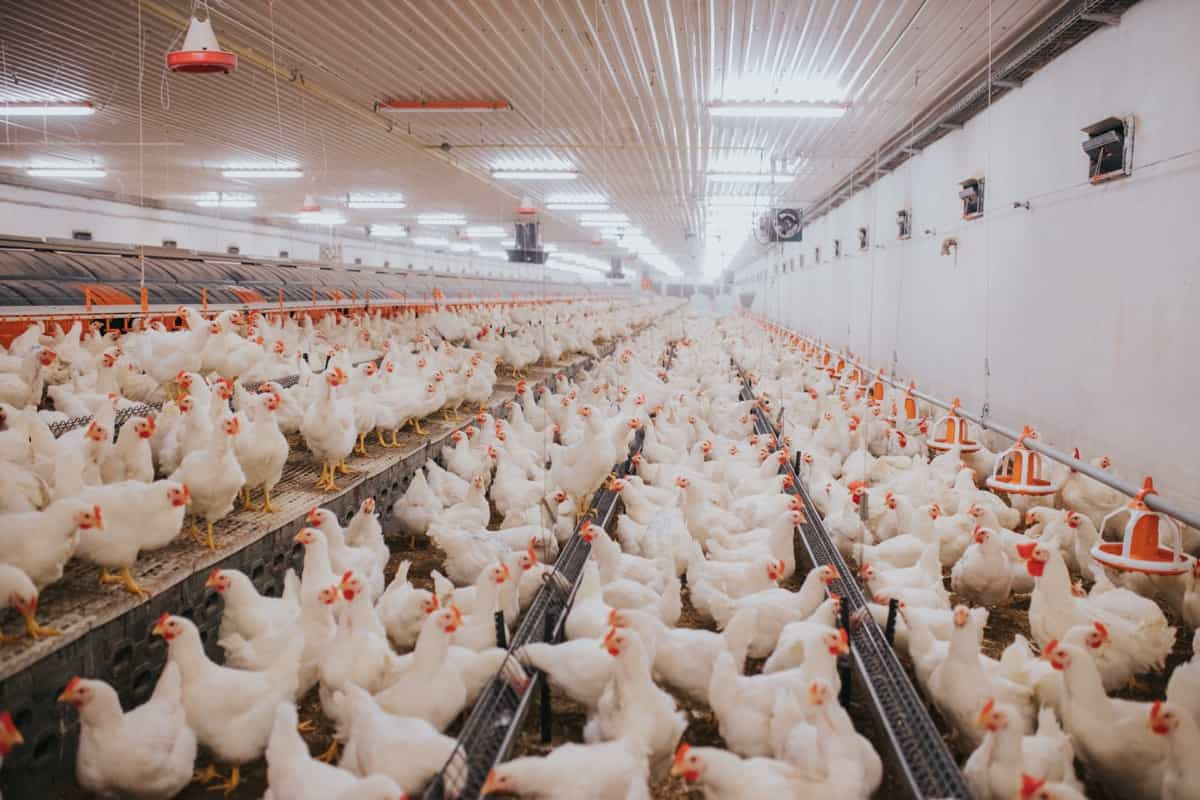
Utilizing Feed Additives for Poultry Gut Health
Feed additives, such as antibiotics, probiotics, prebiotics, enzymes, organic acids, essential oils, herbs, spices, antioxidants, and immunomodulators, are added to poultry diets to improve feed quality, animal performance, health, and welfare. They can affect poultry gut health by inhibiting pathogenic bacteria, promoting beneficial bacteria, enhancing digestion, modifying intestinal pH and microflora, balancing immunity, and reducing inflammation. However, their efficacy, safety, and legality may vary depending on the type, dose, source, quality, and regulation.
Managing Calcium and Phosphorus Levels in Poultry Feeds
Calcium and phosphorus are essential for poultry health, particularly in bone formation, maintenance, and eggshell development in laying hens. A balanced balance of these minerals is crucial throughout the bird’s lifecycle, considering factors like age, sex, breed, and production stage. Insufficient calcium can lead to poor bone quality, rachitis, and osteoporosis, while over-supplementation may cause cage layer fatigue and kidney damage.
Phosphorus is essential for energy metabolism, nucleic acid synthesis, and acid-base balance. Imbalances can result in osteomalacia, reduced egg production, and environmental pollution. Common sources of calcium and phosphorus include limestone, dicalcium phosphate, monocalcium phosphate, defluorinated phosphate, bone meal, fish meal, and phytase, an enzyme that enhances phosphorus release from plant sources.
Imbalances can lead to health complications and optimize production outcomes. Phytase’s role in sustainable nutrition is to unlock phosphorus from plant sources, reducing reliance on inorganic supplements and enhancing nutrient utilization while minimizing phosphorus excretion.
Strategies for Enhancing Digestibility in Poultry Nutrition
One of the key aspects of poultry nutrition is enhancing the digestibility of feed ingredients, which can improve nutrient utilization, performance, and gut health and reduce environmental impact. The ability of a feed ingredient or diet for poultry to digest and absorb nutrients is known as digestibility. Many factors, such as the source, type, form, and level of dietary fiber, the presence of anti-nutritional factors, the processing methods, and the interactions among feed components, can influence digestibility.
Dietary fiber is a major component of plant-based feed ingredients that can affect digestibility in poultry. Dietary fibers are classified into soluble and insoluble types, depending on their solubility in water. Soluble fiber, such as beta-glucans from barley and oats, can increase the viscosity of the digesta and reduce the activity and accessibility of digestive enzymes, resulting in lower digestibility of starch, protein, fat, and other nutrients.
Addressing Specific Nutritional Needs in Different Poultry Species
Precision feeding programs are designed to cater to the specific needs of broiler chickens raised for meat production. These programs aim to provide a balanced diet that includes energy, protein, amino acids, minerals, vitamins, and water to support their rapid growth and muscle development. The nutrient requirements of broilers vary based on factors such as age, sex, breed, health status, and environmental conditions.
In case you missed it: Key Rules to Start Poultry Farming in Denmark: Business Plan, Breeds, Setup Cost, Profit, and Management
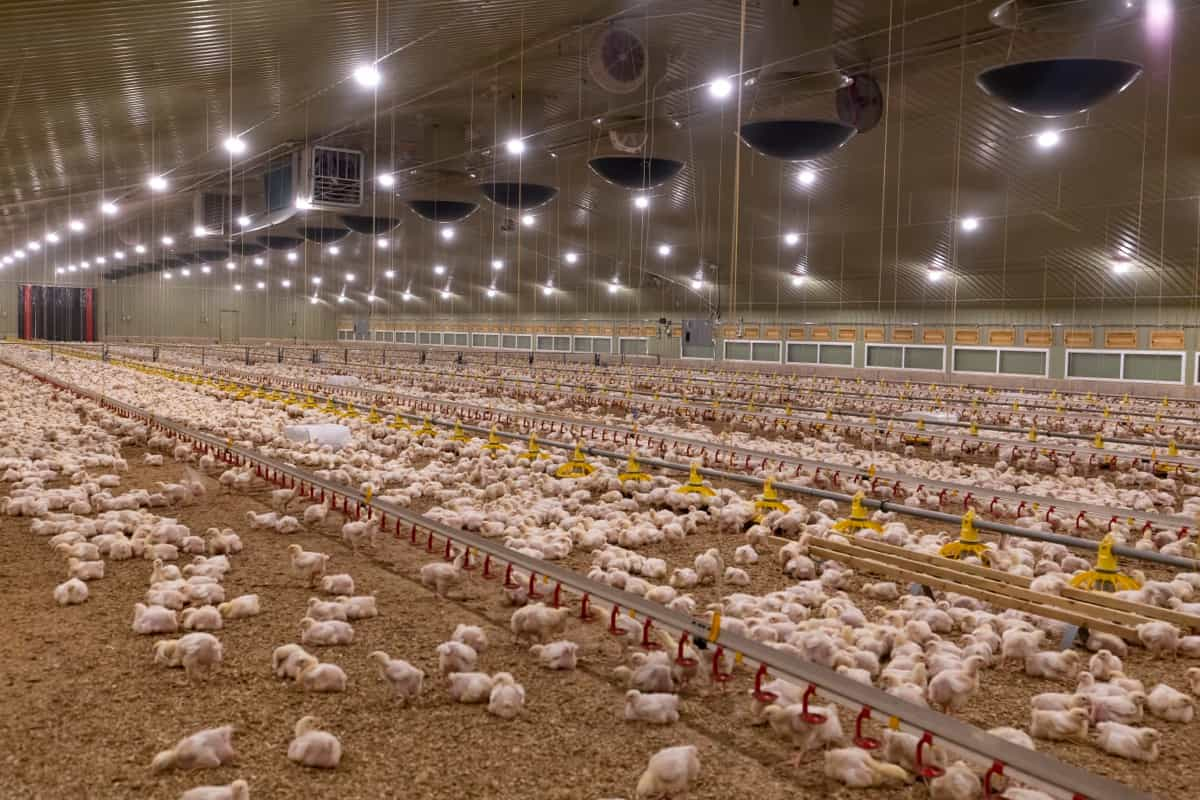
One challenge in precision feeding programs is accurately estimating each bird’s nutrient intake and requirements. This can be achieved using sensors, scales, cameras, or other technologies that monitor feed intake, body weight, growth rate, feed conversion ratio, and health status.
Based on this information, feed formulation and delivery can be adjusted to provide the optimal amount and type of nutrients to each bird. Some systems use infrared sensors to measure body temperature and adjust feed energy content, while others use near-infrared spectroscopy to analyze nutrient composition and adjust feed ingredients.
Precision Feeding Programs for Broilers
Precision feeding programs for broilers can have benefits, such as improving feed efficiency, reducing feed costs, enhancing animal welfare, reducing nutrient excretion and environmental impact, and increasing meat quality and yield. However, precision feeding programs also have some challenges, such as requiring high initial investment, maintenance costs, technical skills, and data management.
Nutritional Considerations for Layer Hen Productivity
Layer hens are chickens that are raised for egg production. They have a lower growth rate and feed efficiency than broilers, but they have higher calcium and phosphorus requirements for eggshell formation. Layer hens need a balanced diet that provides enough energy, protein, amino acids, minerals, vitamins, and water to support their egg production and health.
The nutrient requirements of layer hens vary depending on their age, breed, egg size, egg production rate, health status, and environmental conditions. Therefore, precision feeding programs for layer hens aim to adjust the nutrient composition and quantity of feed according to the required needs of each flock or individual hen.
Minimizing Environmental Impact Through Precision Nutrition
Precision feeding programs for layer hens require accurate estimation of nutrient intake and requirements using sensors, scales, cameras, or other technologies. These systems monitor feed intake, body weight, egg production rate, egg quality, and health status, allowing for optimal feed formulation and delivery.
In case you missed it: Revolutionizing Duck Farming Business: The Benefits and Techniques of Duck Rearing in Polythene Ponds
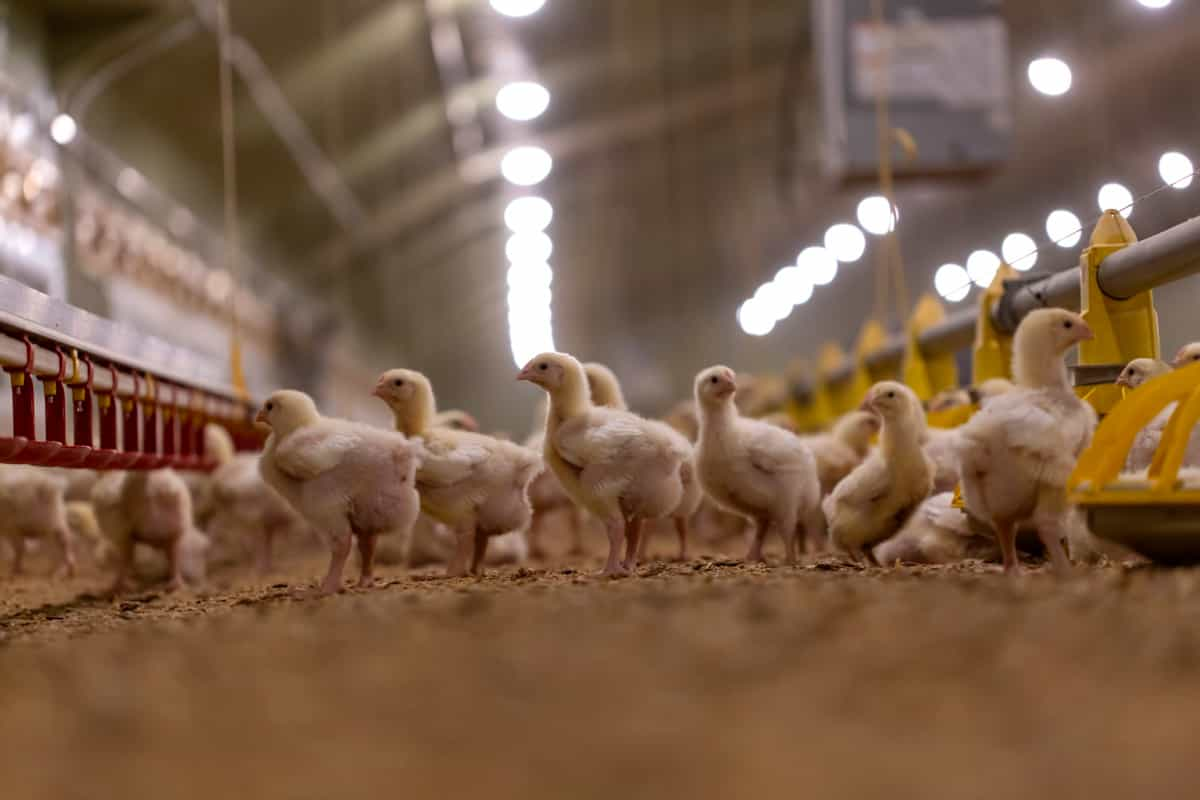
Some systems use RFID tags to identify hens and adjust calcium content. Benefits include improved feed efficiency, reduced costs, animal welfare, reduced nutrient excretion, and increased egg quality and yield. However, challenges include high initial investment, maintenance costs, technical skills, and data management.
Implementing Precision Nutrition in Organic Poultry Farming
Organic poultry farming, a system aiming to promote animal welfare, environmental sustainability, and human health, requires specific nutrition requirements such as using organic feed ingredients, providing access to pasture or outdoor areas, and avoiding synthetic additives or medications.
Implementing precision feeding programs in organic poultry farming involves finding organic feed ingredients that meet the nutrient requirements of poultry, which are often more expensive and less consistent than conventional ingredients. To ensure optimal nutrient intake, these programs need to select and formulate organic feed ingredients carefully.
Balancing feed intake and nutrient intake with access to pasture or outdoor areas is another challenge. These areas can provide additional nutrients but can also reduce feed intake due to lower palatability or increased energy expenditure for foraging or thermoregulation. Therefore, precision feeding programs must monitor and adjust feed intake and nutrient intake based on these factors.
Conclusion
Precision nutrition strategies for poultry farming improve efficiency and sustainability by accurately characterizing ingredients, determining nutrient requirements, and managing them carefully. This approach integrates modern technologies, reducing environmental impact and improving overall poultry welfare.
- Types of Pesticides Used in Agriculture: A Beginner’s Guide
- Economical Aquaculture: A Guide to Low-Budget Fish Farming
- 15 Common Planting Errors That Can Doom Your Fruit Trees
- How to Make Houseplants Bushy: Effective Tips and Ideas
- Innovative Strategies for Boosting Coconut Pollination and Yield
- Pollination Strategies for Maximum Pumpkin Yield
- The Complete Guide to Chicken Fattening: Strategies for Maximum Growth
- Natural Solutions for Tulip Problems: 100% Effective Remedies for Leaf and Bulb-Related Issues
- Revolutionizing Citrus Preservation: Towards a Healthier, Greener Future
- Natural Solutions for Peony Leaf and Flower Problems: 100% Effective Remedies
- Maximizing Profits with Avocado Contract Farming in India: A Comprehensive Guide
- Natural Solutions for Hydrangea Problems: 100% Effective Remedies for Leaf and Flowers
- The Ultimate Guide to Choosing the Perfect Foliage Friend: Bringing Life Indoors
- From Sunlight to Sustainability: 15 Ways to Use Solar Technology in Agriculture
- The Ultimate Guide to Dong Tao Chicken: Exploring from History to Raising
- The Eco-Friendly Makeover: How to Convert Your Unused Swimming Pool into a Fish Pond
- Mastering the Art of Delaware Chicken Farming: Essentials for Healthy Backyard Flocks
- 20 Best Homemade Fertilizers for Money Plant: DIY Recipes and Application Methods
- How to Craft a Comprehensive Free-Range Chicken Farming Business Plan
- Brighten Your Flock: Raising Easter Egger Chickens for Beauty and Bounty
- How to Optimize Your Poultry Egg Farm Business Plan with These Strategies
- Subsidy for Spirulina Cultivation: How Indian Government Schemes Encouraging Spirulina Farmers
- Ultimate Guide to Raising Dominique Chickens: Breeding, Feeding, Egg-Production, and Care
- Mastering the Art of Raising Jersey Giant Chickens: Care, Feeding, and More
- Ultimate Guide to Raising Legbar Chickens: Breeding, Farming Practices, Diet, Egg-Production
- How to Raise Welsummer Chickens: A Comprehensive Guide for Beginners
- How to Protect Indoor Plants in Winter: A Comprehensive Guide
- Ultimate Guide to Grow Bag Gardening: Tips, Tricks, and Planting Ideas for Urban Gardeners
- Guide to Lotus Cultivation: How to Propagate, Plant, Grow, Care, Cost, and Profit
- Agriculture Drone Subsidy Scheme: Government Kisan Subsidy, License, and How to Apply Online
- Ultimate Guide to Raising Araucana Chickens: Breed Profile, Farming Economics, Diet, and Care
- Bringing Hydroponics to Classroom: Importance, Benefits of Learning for School Students
- Ultimate Guide to Raising Polish Chickens: Breed Profile, Farming Economics, Diet, and Care
- Ultimate Guide to Raising Australorp Chickens: Profile, Farming Economics, Egg Production, Diet, and Care
- Silkie Chicken Farming: Raising Practices, Varieties, Egg Production, Diet, and Care
- Sussex Chicken Farming: Raising Practices, Varieties, Egg Production, Diet and Care